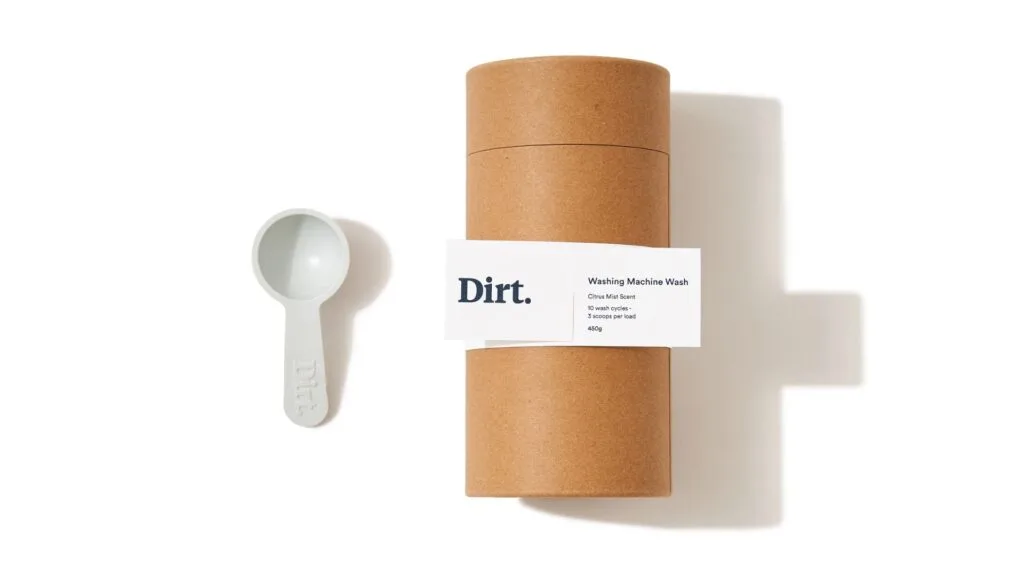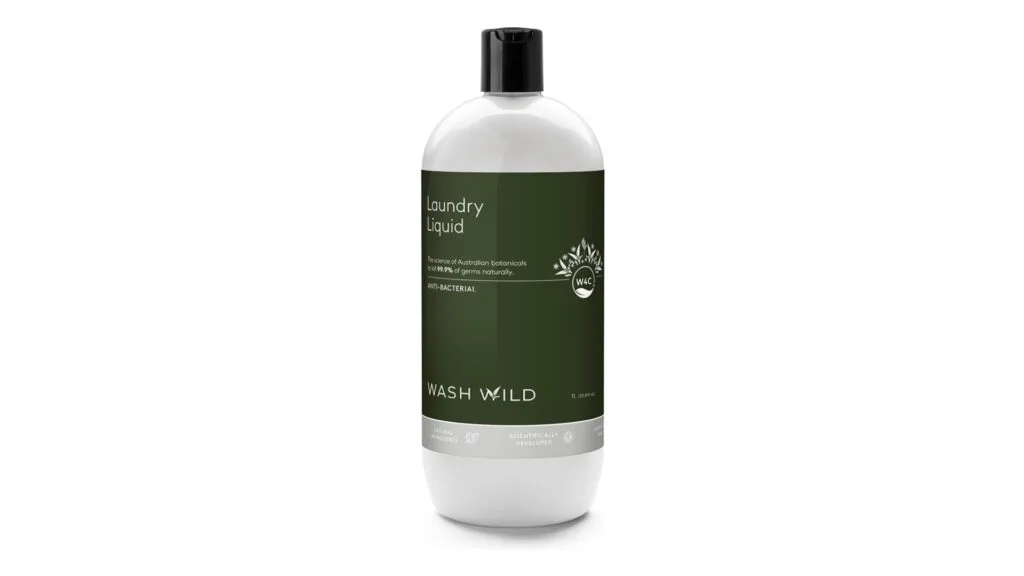There’s nothing quite like the smell of fresh laundry. That is, unless you’ve begun to detect a musty scent permeating your clothes, and not just that questionable load of sweaty gym gear, but every single load. Why does my laundry smell even after washing? You ask yourself, questioning everything from the time it took you to hang the washing after the cycle finished to the big-name brand of washing powder you purchased on special last week. The likeliest culprit, however, is probably the washing machine itself.
It’s important to clean your washing machine regularly, because over time, dirt, minerals and detergent can build up. Pair that with moisture and a lack of ventilation and you’ve got the perfect breeding ground for mould and bacteria. We reached out to Colin Jones, category expert at Appliances Online, for his insider tips on cleaning a washing machine correctly and the simple tips you can follow to ensure your machine stays clean and fresh for years to come.

7 signs your washing machine needs to be cleaned
Colin says some of the signs your washing machine is due for a deep-clean include:
- Clothes smell musty even after they’ve been washed
- Visible mould or mildew growth in the door seal, detergent dispenser or drum
- Clothes coming out of the wash with detergent or fabric softener residue on them
- Clothing discolouration due to mould or mildew
- Water draining slowly after a cycle
- Cycles are taking longer and clothes aren’t being cleaned as effectively as they used to
- Unusual noises like banging, clunking or grinding during a wash

How to clean a washing machine: A step-by-step guide
1. Rinse the drum with hot water
The first line of defence when cleaning a washing machine is to run an empty, long, hot cycle. You may find this is enough to banish odours without having to reach for any strong cleaners at all. Many modern washing machines have a dedicated drum clean cycle that reaches temperatures of about 90℃. Some machines have sensors that will detect the level of residue in the machine and prompt a drum clean as required. If your machine doesn’t have this feature, it’s a good idea to run this cycle at least once a month.
2. Wash the detergent dispenser
Once the drum has been cleaned, it’s important to give the rest of the machine a clean, too, says Colin.
“Many people forget to clean the detergent and fabric softener dispensers,” he says. “Regularly remove and clean the dispenser – you can do this by handwashing them or placing them in the dishwasher (if they are removable and dishwasher safe).”
3. Check the filter
Both front load washing machines and top loaders have lint filters that need to be cleaned regularly, says Colin. Failing to clean the filter “can affect the machine’s efficiency and potentially cause odours or drainage issues,” he says.
Many front load washing machines have the filter located at the front of the machine behind a little ‘door’. Place a towel on the floor in front of the washing machine, then open the access door, unscrew the filter and remove any debris or lint. Clean the filter with hot soapy water and dry it thoroughly before replacing it and closing the access door.
Top loaders, on the other hand, often have a filter located in the central agitator or in the drum itself, hidden behind a hatch. Simply remove from the machine, remove debris and clean with hot soapy water before placing it back in the machine.
If the location of the filter is not obvious, consult the user manual.

4. Wipe everything down
Next, it’s time to give the machine a complete once-over. Start by wiping down the door seals with a soft microfibre cloth. Moisture can accumulate in this hidden section of the machine, leading the a build-up of mould. Pay attention to the areas around the door window and
Then it’s time to dust the surface of the machine. Using a damp, soapy microfibre cloth, wipe down the outside of the machine. Buff dry with another microfibre cloth to prevent streaking.
5. Dry and dust
The best way to ensure smells stay away for good is to allow your machine to dry thoroughly between uses. To do this, simply keep the door and detergent compartment ajar after each use. Finish off the washing machine clean by vacuuming around, beneath and behind the machine.
How to get rid of mould in a front load washing machine
Front load washing machines have a reputation for harbouring mould, but with regular care this doesn’t have to be the case. If you can see that your machine has already succumbed to mould, here’s how to get it back into shape. When cleaning a mouldy washing machine, be sure to ensure the room is well-ventilated and that you’re wearing gloves and protective clothing.
Removing mould from front load washing machine gasket
To remove mould from a washing machine gasket, LG recommend wiping it with a solution of oxygen bleach (such as Napisan or Sard Wonder) and water. Repeat weekly.
How to clean a washing machine with vinegar
Is it safe to use vinegar to clean a washing machine? The short answer: yes. Vinegar is an effective, natural mould killer that can banish product build-up and musty odours. While many swear by a hot water and vinegar cycle to keep their machine in tip-top condition, some manufacturers warn against the practice, as vinegar may cause damage to the machine over time. Simply add two cups of white vinegar to the washing machine’s detergent dispenser and run a drum clean cycle. If in doubt, refer to the user manual.

How to clean a washing machine with vinegar and bi-carb soda
Colin says to clean a washing machine with vinegar, “Add two cups of white vinegar to your machine’s detergent compartment. Mix a quarter cup of baking soda with water and add it to the drum and gasket.” Immediately run an empty long, hot cycle to rinse out the vinegar and the bi-carb soda.
How to clean washing machine with bleach
If you can smell mould, but can’t see it, try giving the drum a thorough clean to banish mould lurking in unseen places. Samsung recommend starting by running a spin-only cycle (to remove excess moisture). Add chlorine bleach to the detergent dispenser and immediately run a hot, long cycle or a drum clean cycle. Once the cycle has completed, run a rinse cycle to ensure all bleach residue is removed. Dry the machine with a soft, microfibre cloth and leave the machine’s door and detergent dispenser ajar to air dry completely.
Let’s talk about scrud
“Scrud is the name given to the build up of detergent or fabric softener,” says Colin. “It can give your clothes a waxy texture or leave brown, greasy marks on your clothes. It can affect the efficiency and performance of the washing machine if it is not regularly cleaned and removed.
“To prevent or remove scrud, it’s recommended to clean the washing machine’s detergent and fabric softener compartments, run empty hot water cycles with vinegar or specialised washing machine cleaners, and periodically wipe down the interior surfaces of the machine.”
To remove scrud from a top load washing machine, LG recommend dissolving 2-3 dishwashing tablets in a bucket of hot water. Pour the solution directly into the washing machine drum and run the machine’s hottest and longest cycle.
Simple ways to keep your washing machine fresh
- Reduce the amount of laundry detergent you’re using. Follow the recommended dose or even halve it – you may be surprised at how clean your clothes come out using less, rather than more, detergent.
- Skip the fabric softener. Fabric softener may make your clothes soft, perfumed and snuggly, but it’s also leaving behind the exact same residue in your machine (known as ‘scrud’). Over time, this can lead to bacteria and mould built up. If you’re not ready to ditch softener, use it sparingly instead or replace it with a dash of vinegar.
- Keep the washing machine’s door and soap dispenser ajar between washes. This will allow the machine to dry out, reducing the chances of mould and mildew developing.
- Run the occasional hot cycle. If you swear by cold water washes, you may find that musty smells build up in your machine frequently. Consider running the odd warm or hot cycle (for towels or bedding) to keep things fresh.
Best washing machine cleaners

01
Unscented oxygenated bleach
From $19.95, Koala Eco
Oxygenated bleach (not to be confused with its harsh cousin chlorinated bleach) is a gentle and versatile way to banish stains and odours – even from coloured clothing. LG recommend wiping down washing machine seals regularly with a solution of oxygenated bleach and water. This will prevent odours and mould building up. Koala Eco’s non-toxic solution is ultra-concentrated, colour safe and antibacterial.

02
Samara microfibre kitchen towel 3-pack
From $9.95, Pillow Talk
Oxygenated bleach (not to be confused with its harsh cousin chlorinated bleach) is a gentle and versatile way to banish stains and odours – even from coloured clothing. LG recommend wiping down washing machine seals regularly with a solution of oxygenated bleach and water. This will prevent odours and mould building up. Koala Eco’s non-toxic solution is ultra-concentrated, colour safe and antibacterial.

03
Vamoosh washing machine cleaner
From $10.50, Amazon
Oxygenated bleach (not to be confused with its harsh cousin chlorinated bleach) is a gentle and versatile way to banish stains and odours – even from coloured clothing. LG recommend wiping down washing machine seals regularly with a solution of oxygenated bleach and water. This will prevent odours and mould building up. Koala Eco’s non-toxic solution is ultra-concentrated, colour safe and antibacterial.

04
Dirt washing machine drum wash
From $39.95, Dirt.
Australian made laundry detergent company Dirt have created a powerful washing machine drum cleaner harnessing the power of citric acid. The formula is made without phosphates, parabens or synthetic dyes or scents but will make limescale and bacteria build-up a thing of the past. Use three scoops in a hot wash (ideally 60℃ or above) for best results.

05
Wash Wild laundry liquid (1 litre)
From $12.47, Amazon
Australian made laundry detergent company Dirt have created a powerful washing machine drum cleaner harnessing the power of citric acid. The formula is made without phosphates, parabens or synthetic dyes or scents but will make limescale and bacteria build-up a thing of the past. Use three scoops in a hot wash (ideally 60℃ or above) for best results.
 Photography: Mindi Cooke | Styling: Kylie Jackes
Photography: Mindi Cooke | Styling: Kylie Jackes

